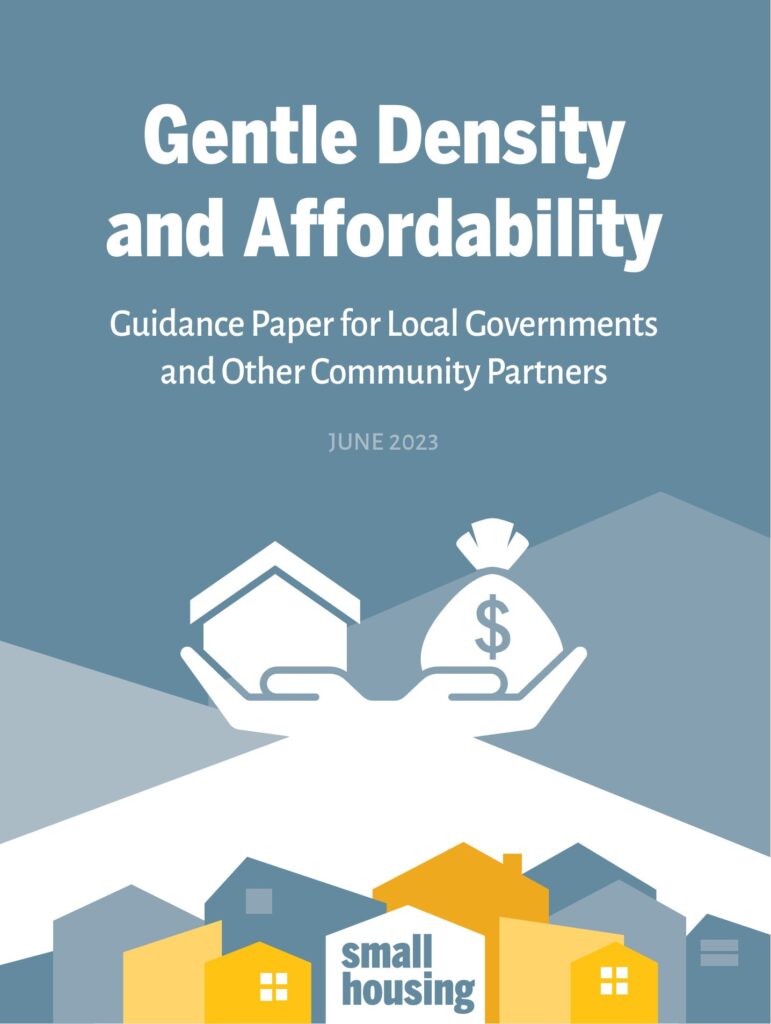
This Small Housing Guidance Paper identifies existing and emerging tools for local governments to increase the supply of gentle density and enhance its affordability.
This guidance paper brings together insights and perspectives collected through two expert roundtables where participants identified existing and emerging tools for local governments to increase the supply of gentle density and enhance its affordability.
Key insights:
- Gentle density housing is more attainable than single-detached homes due to shared land costs, smaller square footage per unit, and shared building surfaces.
- The local government tools (see below) can make it easier to build this form of housing, and can help to bring down the costs of development. This, in turn, will help to incentivize the production of new supply. As more supply comes online, housing prices cool.
- If local governments stack the tools (and their related cost reductions), they may be able to create sufficient incentives to make the inclusion of below-market units viable within a development.
- There are additional tools that can be leveraged by community partners, such as non-profits, lenders, and other levels of government, that can further support the creation of new and affordable gentle density homes.
Tools for Local Government to support affordability:
- Pre-Approved Plans; Pre-Zoning Allowing for Ownership Tenure: Strata or Freehold; Regulatory Relaxations; Cash-in-Lieu Infrastructure Fund; Limiting Greenfield Development; Parking Reductions; Expedited Project Streams; Delegated Approvals; Certified External Professional Review; Density Bonusing; Reduced Fees; Tax Exemptions
Tools for Non-Profits, Lenders, and Senior Governments to support affordability:
- Create and resource a central knowledge holder; Provide administration support for housing agreements and affordable rentals or ownership; Oversee pre-approved plans; Develop supportive lending products; Create additional services and supports for local governments; Provide greater authority for local governments to enable gentle density; Develop new tools to incentivize gentle density